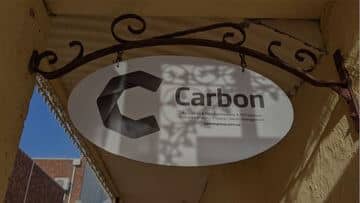Living Away From Home Allowance (LAFHA) helps cover the extra costs that employees face when required to temporarily live away from their normal residence for work purposes. Whether you’re new to LAFHA or just need a quick refresher, our tax experts explain the basics of LAFHA, its current updates, how to calculate its taxable value and key compliance requirements.
Table of Contents
What is LAFHA?
LAFHA is a fringe benefit tax payment provided by employers to cover additional living expenses, such as accommodation and food, when an employee is required to work away from home temporarily.
This isn’t the same as a travel allowance, which is meant for short-term business trips, and it primarily applies to arrangements like remote work assignments or FIFO (fly-in, fly-out) setups.
Key points to note:
- Purpose: To compensate employees for extra costs incurred when they must live away from home.
- Eligibility: Applies when an employee’s work requires them to temporarily reside at a location away from their established home.
- Tax Implications: LAFHA is treated as a fringe benefit under FBT rules rather than as assessable income.
LAFHA Basics and Eligibility
Before diving into recent updates, let’s review the foundations.
LAFHA is intended to reimburse employees for extra living costs while they are on a temporary assignment away from their usual residence. This cost relief is provided as a fringe benefit, which means that when structured correctly, it offers tax advantages to both the employee and employer.
Eligibility Criteria
For an employee to qualify:
- Their role requires living away from their normal home for an extended period (generally more than a short business trip).
- They must continue to maintain a home in Australia that remains available for immediate use.
- For certain arrangements, such as fly-in/fly-out or drive-in/drive-out, the rules can be more flexible.
Tax Treatment
For employees:
- When set up correctly, LAFHA payments aren’t counted as taxable income, so employees usually don’t pay income tax on them.
- If the total fringe benefits in an FBT year exceed $2,000, the grossed-up value must be reported as a Reportable Fringe Benefits Amount (RFBA), which could affect eligibility for certain tax offsets.
For employers:
- LAFHA is subject to Fringe Benefits Tax at a rate of 47% on any taxable portion of the allowance after applying eligible exemptions.
- Employers can claim a tax deduction for both the LAFHA payments and the related FBT, potentially making it a cost-effective part of employee remuneration.
Calculating the Taxable Value
The taxable value of a LAFHA is determined by subtracting any substantiated, eligible expenses from the total allowance:
Exempt Components:
- Accommodation: Actual costs (with receipts or other evidence) are fully exempt.
- Food: The allowance can be reduced by the employee’s substantiated food expenses above a statutory base (typically $42 per adult per week for normal consumption). For example, the “reasonable” weekly food allowance has increased from $316 in 2023–24 to $331 in 2024–25.
Unspent Allowance:
- Any portion not incurred as an eligible expense is fully taxable under FBT.
Calculation Scenarios:
- For employees who maintain a home in Australia, the taxable value for the first 12 months at a specific work location is calculated as the total allowance minus the exempt accommodation and food expenses.
- For FIFO or drive-in/drive-out arrangements, the calculation is similar, though the timeframes or substantiation requirements may vary.
Understanding these calculations is crucial for both parties to take full advantage of the concessional FBT treatment.
Record-Keeping and Documentation
Strict compliance with ATO requirements is essential for LAFHA arrangements:
Employee Declarations:
Employees must provide an approved declaration confirming they are living away from home and detailing expected expenses. Updated forms are typically available via intranet or government resources.
Supporting Documents:
Employers should collect receipts, bank or credit card statements, lease agreements and other evidence to substantiate actual expenses incurred.
Retention Requirements:
All records and declarations should be retained for at least five years to comply with ATO guidelines.
The 12‑Month Period and Adjustments
The concessional FBT treatment generally applies for the first 12 months that an employee is required to live away from home at a given work location. Key details include:
Pausing the Period:
The 12‑month period can be paused, for example, during periods of annual or sick leave, if the employee returns temporarily to their normal residence.
New Work Locations:
If an employee is transferred to a new location where commuting from their former work location is unreasonable, a new 12‑month period may begin.
Intent to Return:
To maintain eligibility, it must be clear that the employee intends to resume living at their usual home once the temporary assignment concludes.
Employer Responsibilities
For businesses providing LAFHA, it is essential to adhere to precise compliance measures:
Determine Eligibility:
- Confirm the payment qualifies under LAFHA rules and that the role genuinely requires a temporary relocation.
Calculate the Taxable Value:
- Apply the reductions for actual, substantiated accommodation and food expenses.
Maintain Accurate Records:
- Keep employee declarations and all supporting documentation for at least five years.
Submit FBT Returns:
- Include LAFHA allowances in the annual FBT return and report any Reportable Fringe Benefits Amounts if the threshold is exceeded.
Following these steps helps avoid any compliance issues and ensures that both the employer and employee benefit from the proper tax treatment.
Take Control of Your LAFHA
LAFHA is a straightforward way to help employees manage additional living costs while away for work, provided the arrangement is set up correctly. By understanding the eligibility criteria and tax implications, both employers and employees can make informed decisions and maintain compliance with ATO rules.
If you have any questions or need advice on setting up or reviewing your LAFHA arrangements, get in touch with us at Carbon. We’re here to help ensure that you have all the necessary information to make the right decisions for your business.






















